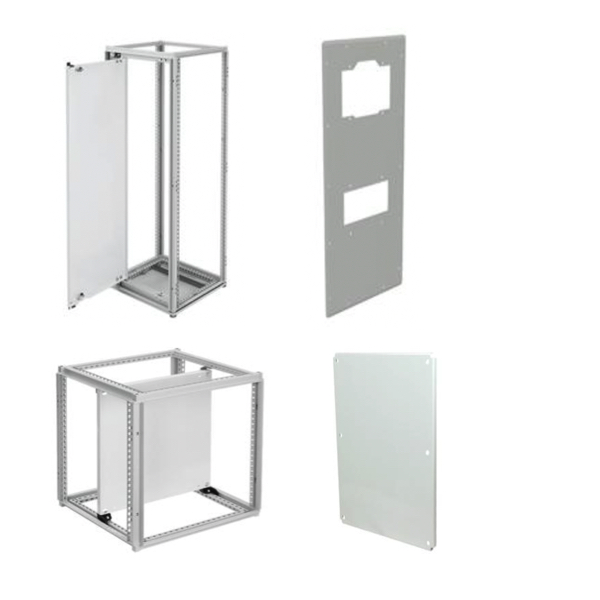Enclosure Backplates & Panels

Enclosure backplates and panels provide a secure, organized mounting surface for electrical and control components inside industrial enclosures. These panels are typically offset from the enclosure wall, allowing devices to be mounted without compromising the enclosure’s structural integrity or NEMA rating. Many backplates are designed with pre-drilled or pre-punched mounting patterns that align with enclosure frames, simplifying installation and ensuring proper fit.
Interior panels and subpanels are commonly removable, allowing technicians to assemble, modify, or service electrical components outside the enclosure before installation. This modular approach improves workflow efficiency and reduces downtime during maintenance or upgrades. Enclosure backplates and panels are available in a wide range of materials, including painted steel, galvanized steel, stainless steel, aluminum, fiberglass, wood, and composite materials to match application requirements and environmental conditions.
Gland plates are specialized enclosure panels equipped with gaskets to allow cable entry and exit while maintaining the enclosure’s environmental rating. They are often easier to drill or punch than enclosure walls and can help preserve NEMA ratings when modifications are required. Gland plates may also be used to cover unused cutouts from removed accessories or to adapt enclosures to new external equipment with different mounting footprints.
FAQs
Q: What are enclosure backplates used for?
Enclosure backplates provide a mounting surface for electrical devices such as DIN rail, terminal blocks, drives, and control components while maintaining proper spacing and enclosure ratings.
Q: Can enclosure backplates be removed or replaced?
Yes. Most enclosure backplates and interior panels are removable, allowing components to be assembled, modified, or serviced without uninstalling the entire enclosure.
Q: What materials are enclosure backplates and panels made from?
Common materials include painted steel, galvanized steel, stainless steel, aluminum, fiberglass, wood, and composite materials, depending on environmental and application requirements.
Q: What is the purpose of a gland plate?
Gland plates provide a removable, gasketed surface for cable entry and exit while helping maintain the enclosure’s NEMA or environmental rating.
Q: Are gland plates useful for enclosure modifications?
Yes. Gland plates are often used to cover unused cutouts, adapt enclosures for new equipment, or simplify drilling and punching while preserving enclosure ratings.
Why Buy Enclosure Backplates & Panels from RSP Supply
RSP Supply offers a broad selection of enclosure backplates, subpanels, gland plates, and interior panel accessories designed for reliable integration into industrial control enclosures. Our product lineup supports efficient panel building, secure component mounting, and long-term durability across a wide range of industrial applications. Customers rely on RSP Supply for dependable industrial components, knowledgeable technical support, and consistent sourcing for enclosure accessories and panel hardware.

